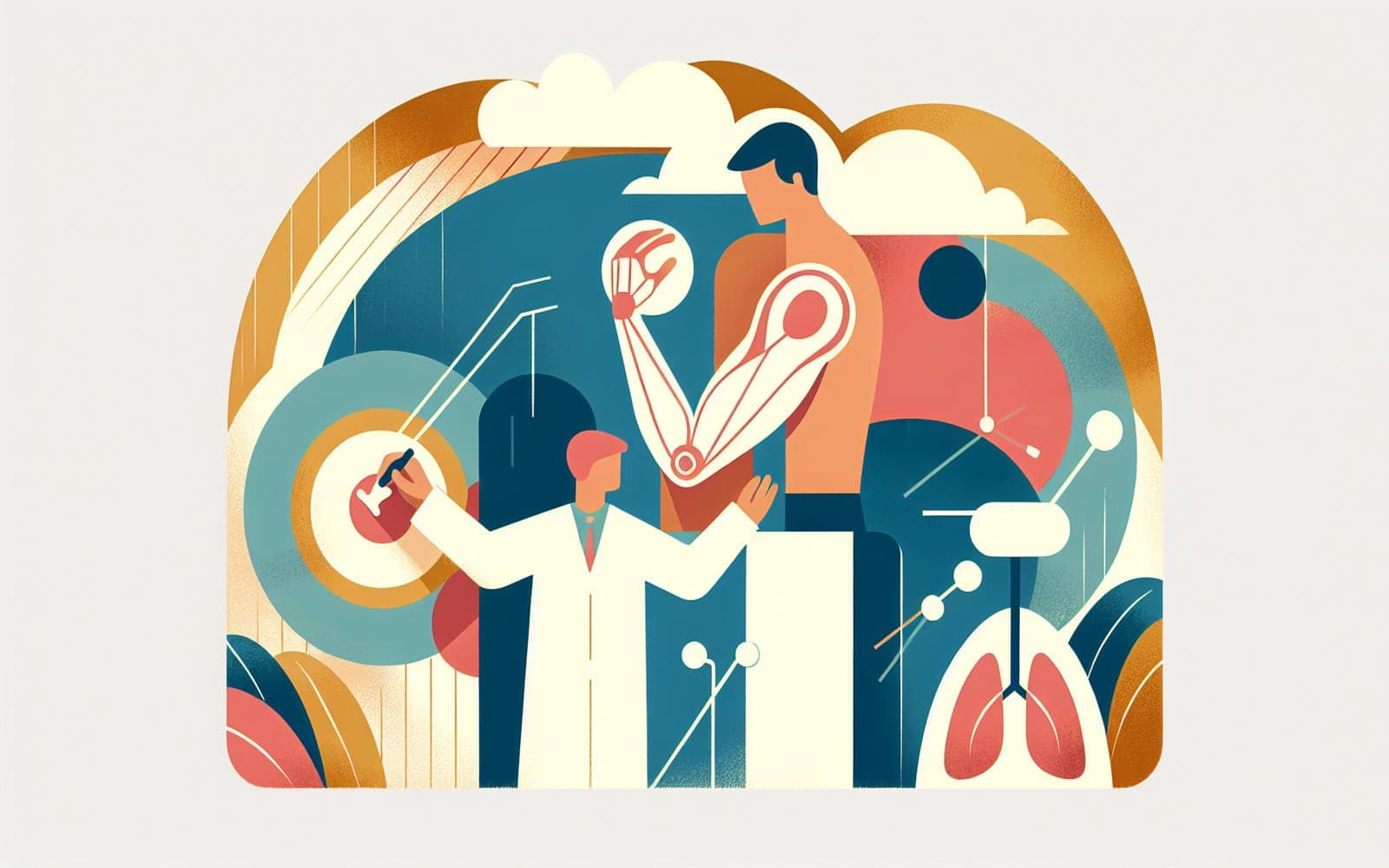Contents
-
The Physical Exam: More Than Meets the Eye
-
Imaging: Looking Beneath the Surface
-
Diagnostic Injections: Pinpointing the Pain
How Do Doctors Diagnose Biceps Tendon Injuries?
How Do Doctors Diagnose Biceps Tendon Injuries?
Uncovering the Culprit
When it comes to shoulder pain, pinpointing the exact cause can be tricky. Biceps tendon injuries often mimic other shoulder problems, making accurate diagnosis crucial. Let's explore the tests doctors use to identify these elusive injuries.
Contents
-
The Physical Exam: More Than Meets the Eye
-
Imaging: Looking Beneath the Surface
-
Diagnostic Injections: Pinpointing the Pain
The Physical Exam: More Than Meets the Eye
Your doctor will start with a thorough physical examination. They'll look for tenderness along the biceps tendon and may perform special tests like the Speed test or Yergason test. In these tests, you'll be asked to move your arm in specific ways while the doctor applies resistance. Pain or weakness during these movements can indicate a biceps tendon problem.
Imaging: Looking Beneath the Surface
While a physical exam can provide valuable clues, imaging tests offer a more detailed look. Ultrasound is often the first choice, as it's quick, affordable, and can show the tendon in motion. MRI (Magnetic Resonance Imaging) provides even more detailed images and can reveal subtle injuries that ultrasound might miss. X-rays are less useful for soft tissue injuries but may be used to rule out other bone-related problems.
Diagnostic Injections: Pinpointing the Pain
In some cases, your doctor might use a diagnostic injection. By injecting a local anesthetic into the area around the biceps tendon, they can see if your pain improves. If it does, this suggests the biceps tendon is indeed the source of your discomfort. This technique can be particularly helpful when other tests are inconclusive.
FAQs
Are these tests painful?
Physical exams may cause temporary discomfort but aren't typically painful.
How long does diagnosis take?
It can vary, but often takes 1-2 visits plus time for any imaging results.
Can biceps tendon injuries be misdiagnosed?
Yes, which is why a combination of tests is often used for accuracy.
Do I need all these tests?
Not necessarily; your doctor will determine which tests are most appropriate for you.
Can I diagnose a biceps tendon injury at home?
While you may suspect an injury, professional diagnosis is crucial for proper treatment.
The Diagnostic Journey
Accurate diagnosis of biceps tendon injuries often requires a combination of clinical expertise and advanced imaging techniques.
Additional References
-
Skendzel JG, Jacobson JA, Carpenter JE, Miller BS. Long head of biceps brachii tendon evaluation: accuracy of preoperative ultrasound. AJR Am J Roentgenol 2011; 197:942.
-
Armstrong A, Teefey SA, Wu T, et al. The efficacy of ultrasound in the diagnosis of long head of the biceps tendon pathology. J Shoulder Elbow Surg 2006; 15:7.
-
Hashiuchi T, Sakurai G, Morimoto M, et al. Accuracy of the biceps tendon sheath injection: ultrasound-guided or unguided injection? A randomized controlled trial. J Shoulder Elbow Surg 2011; 20:1069.
This article has been reviewed for accuracy by one of the licensed medical doctors working for Doctronic.












